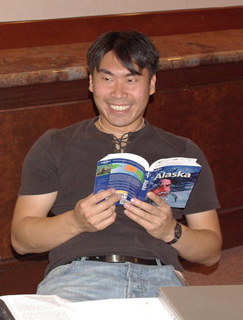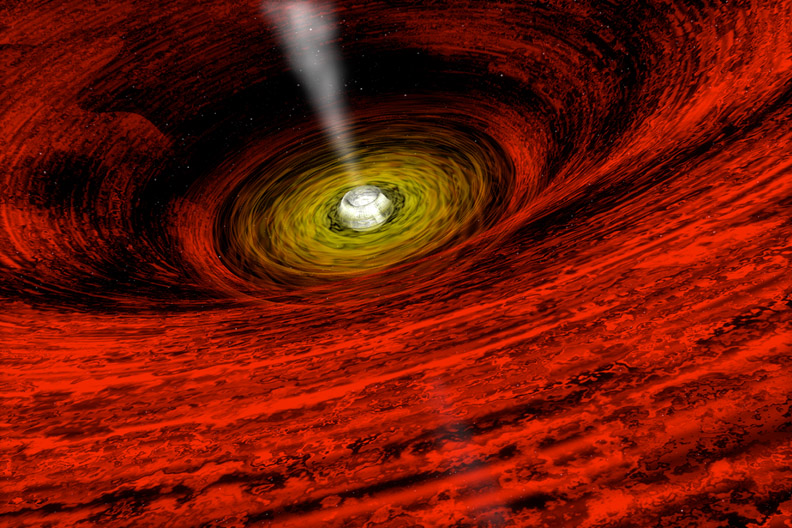Career Development
From the Chalkboard to the Diving Board
Stacie Powell is currently a Ph.D. student in astrophysics at Institute of Astronomy at the University of Cambridge, England. She also took a break this past summer to compete in the 10-meter diving platform competition for Great Britain at the 2012 Olympic Games in London. Stacie took some time from her busy schedule to discuss her academic and career path thus far.
I have always had a very questioning mind and liked to learn how the physical processes and objects we see around us can be explained so simply by mathematics. The biggest question in life -- "How did we get here?" -- has always intrigued me. I find astronomy very rewarding as it provides small clues, which are beginning to be pieced together and help us answer this question and, ultimately, to understand the Universe we live in.
How to stumble into a PhD project, and how it can follow you

Teddy Cheung,
Credit: Craig Walker
We are delighted to welcome Teddy Cheung, from the National Academy of Sciences, and resident at the Naval Research Laboratory in Washington DC, to give a guest blog post today. Teddy is first author of a paper describing the discovery of the most distant X-ray jet detected to date. Here, he explains some of the background story behind this discovery.
When I started graduate school in 1999 at Brandeis University, exciting discoveries were being made down the road in Cambridge, Massachusetts, with the then newly launched Chandra X-ray Observatory. The first Chandra image unexpectedly revealed a bright X-ray jet from a distant quasar (https://chandra.harvard.edu/press/99_releases/press_082399.html) and the research groups at SAO and MIT were puzzling over it. But it took me leaving Boston to find my eventual connection.
I spent the summer of 2000 at the Space Telescope Science Institute in Baltimore, Maryland, wanting to learn something entirely new and took on a project in Meg Urry's group studying the galaxies of BL Lac objects (a type of cousin to the quasars) using ground-based near-infrared data. Coincidentally, I shared an office with another graduate student working with Dr. Urry for the summer, Fabrizio Tavecchio from Italy, and they were at that time puzzling over the same Chandra jet detection. Little did I appreciate at the time, that this visit to Baltimore would lead back to my eventual PhD project at Brandeis on the Chandra quasar jets.
Meet An Astronomer: Pat Slane
Pat Slane, a scientist at the Harvard-Smithsonian Center for Astrophysics, is a very busy guy. In addition to being the head of Chandra's Mission Planning group, he also conducts his own independent research into the study of supernova remnants and neutron stars (the aftermath of the massive stars that have exploded.) He also takes the time to participate in outreach, including heading up the "Stop for Science" project. Despite his hectic schedule, Pat sat down with the Chandra blog to discuss how he got where he is today in his career.
Women in the High-Energy Universe: April Jubett
April Jubett creates animations and videos to help explain Chandra’s discoveries in a visual way. Her work shows up most frequently as podcasts and short animations on the Chandra website.
I have always been interested in art and science, and the many connections between them. It started unconsciously, with a curiosity about the natural world around me and a fondness for drawing and trying to capture that world while learning more about it. When I found out that there are whole careers built on exploring the beauty and mystery of the universe, I thought, "Yeah, I can do that".
Women in the High-Energy Universe: Pepi Fabbiano
Dr. Giuseppina (Pepi) Fabbiano is a senior astrophysicist at the Smithsonian Astrophysical Observatory where she studies, among other things, galaxies, black holes and the rest of the high-energy Universe using Chandra and other telescopes.
It would be fair to say that I stumbled into astronomy. I grew up in a family of teachers, professors and professionals, both men and women, and there never was any doubt that I had to go to university and then get a good job. I was a precocious learner and always ‘first of the class.’ I won the math prize in high school and was one of a busload of high school students from the whole of Italy rewarded with a prize visit to France.
Women in the High-Energy Universe: Aneta Siemiginowska
Aneta Siemiginowska is an astrophysicist at the Chandra X-ray Center. In addition to her responsibilities for Chandra’s Science Data System group, she is actively involved is exploring the Universe, particularly its black holes and galaxies.
Meet An Astronomy Intern: Jessica Brodsky
In this latest video blog, we sit down with Jessica Brodsky. Jessica is a student from Brown University who spent part of her summer doing detective work on the archive of Chandra images. Her task was to back fill the metadata into the Chandra images on chandra.si.edu. From her feedback, it was a useful experience, as Jessica's interests lie in digital assets management and web development. (We also heard that Jessica plans to take an astronomy course at Brown this year - awesome!).
Meet an Astronomer: Joseph DePasquale
In this installment of our Meet An Astronomer video blog, we sit down with Joseph DePasquale. Joe is the Chandra science image processor who works hard to create the astronomy images that appear in press releases, on our web site, in print materials, and elsewhere. We think he has a pretty cool job, with a great combination of science and art.
Meet An Astronomer: Julia Lee
Back by popular demand is our video blog series, Meet An Astronomer.
Julia Lee is an associate professor in the astronomy department at Harvard. We caught up with Julia at a moment when she wasn't busy with her regular duties of running a research lab, teaching students, and everything else that a full-time position at a university like Harvard entails. Julia sat down with our "Meet an Astronomer" crew to explain how various choices she made led to her current career.
Women in the High-Energy Universe: Kim Arcand
Kimberly Arcand has been a member of the Chandra Education & Public Outreach group since 1998. As the Media Production Coordinator, Kim's role includes oversight of a range of science outreach products and activities, including imaging and astronomical visualization, multimedia and print product development, exhibition creation and coordination, and development of museum/planetarium and broadcast products.

